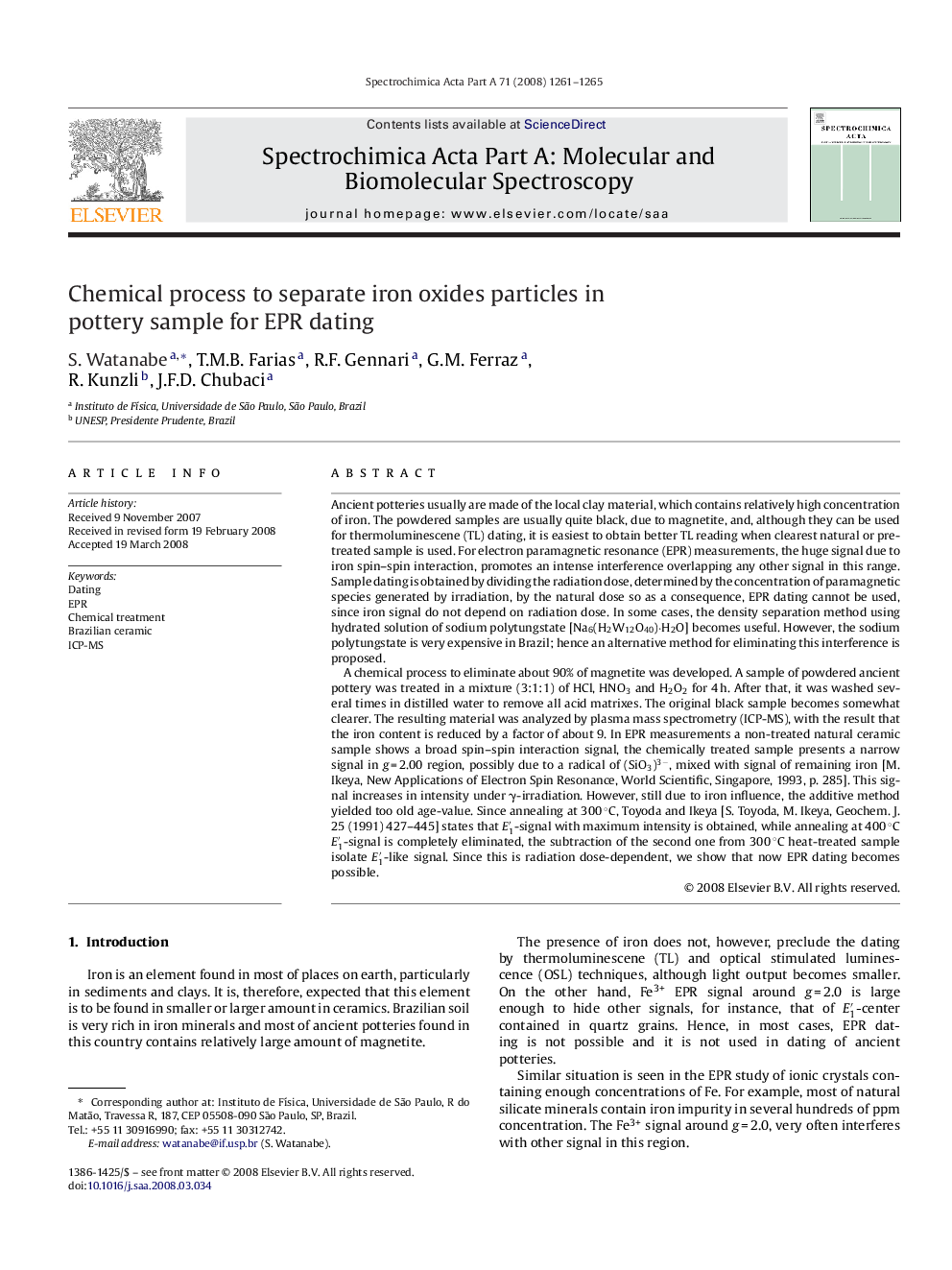| کد مقاله | کد نشریه | سال انتشار | مقاله انگلیسی | نسخه تمام متن |
|---|---|---|---|---|
| 1233851 | 968818 | 2008 | 5 صفحه PDF | دانلود رایگان |

Ancient potteries usually are made of the local clay material, which contains relatively high concentration of iron. The powdered samples are usually quite black, due to magnetite, and, although they can be used for thermoluminescene (TL) dating, it is easiest to obtain better TL reading when clearest natural or pre-treated sample is used. For electron paramagnetic resonance (EPR) measurements, the huge signal due to iron spin–spin interaction, promotes an intense interference overlapping any other signal in this range. Sample dating is obtained by dividing the radiation dose, determined by the concentration of paramagnetic species generated by irradiation, by the natural dose so as a consequence, EPR dating cannot be used, since iron signal do not depend on radiation dose. In some cases, the density separation method using hydrated solution of sodium polytungstate [Na6(H2W12O40)·H2O] becomes useful. However, the sodium polytungstate is very expensive in Brazil; hence an alternative method for eliminating this interference is proposed.A chemical process to eliminate about 90% of magnetite was developed. A sample of powdered ancient pottery was treated in a mixture (3:1:1) of HCl, HNO3 and H2O2 for 4 h. After that, it was washed several times in distilled water to remove all acid matrixes. The original black sample becomes somewhat clearer. The resulting material was analyzed by plasma mass spectrometry (ICP-MS), with the result that the iron content is reduced by a factor of about 9. In EPR measurements a non-treated natural ceramic sample shows a broad spin–spin interaction signal, the chemically treated sample presents a narrow signal in g = 2.00 region, possibly due to a radical of (SiO3)3−, mixed with signal of remaining iron [M. Ikeya, New Applications of Electron Spin Resonance, World Scientific, Singapore, 1993, p. 285]. This signal increases in intensity under γ-irradiation. However, still due to iron influence, the additive method yielded too old age-value. Since annealing at 300 °C, Toyoda and Ikeya [S. Toyoda, M. Ikeya, Geochem. J. 25 (1991) 427–445] states that E′1-signalE′1-signal with maximum intensity is obtained, while annealing at 400 °C E′1-signalE′1-signal is completely eliminated, the subtraction of the second one from 300 °C heat-treated sample isolate E′1-likeE′1-like signal. Since this is radiation dose-dependent, we show that now EPR dating becomes possible.
Journal: Spectrochimica Acta Part A: Molecular and Biomolecular Spectroscopy - Volume 71, Issue 4, 15 December 2008, Pages 1261–1265